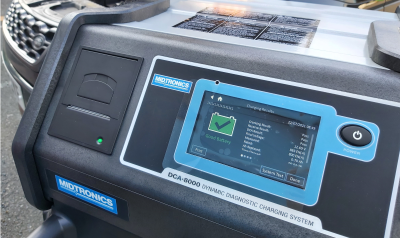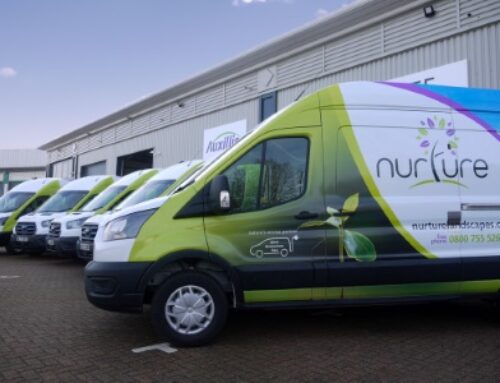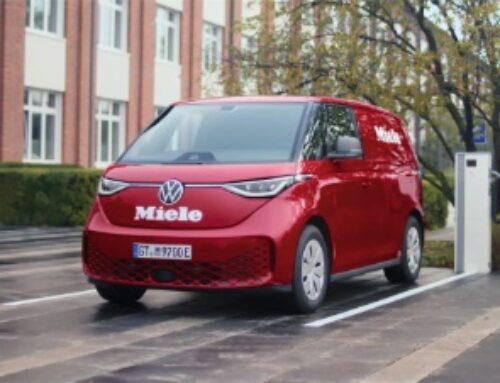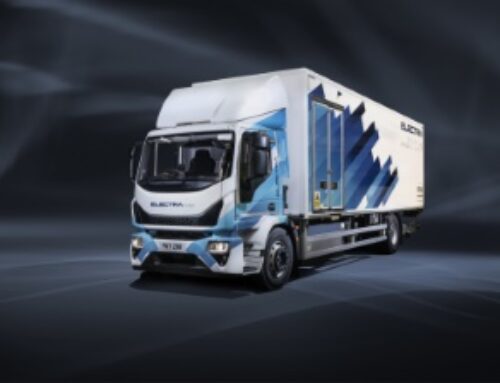Rotronics helps fleets shift to EV
 Power management specialist Rotronics has outlined the impact on battery maintenance regimes of the gradual rise of electric vehicles (EVs).
Power management specialist Rotronics has outlined the impact on battery maintenance regimes of the gradual rise of electric vehicles (EVs).
In EV applications, says the company, the battery is no longer used for its cranking ability (i.e. to start the vehicle). Instead, its role is now shifting towards providing life support for the electrical systems, which are increasing in range and sophistication.
This means that battery management still needs to be at the forefront of a workshop’s activities, Rotronics says.
Whilst cranking ability has less of a role in EVs, the reserve capacity plays the starring role in supporting the electrical systems, adds the company; while for ICE (combustion engine) vehicles and hybrids, both cranking ability and reserve capacity are vital to test and charge.
“In the shift towards electrification, the 12v battery has a more important role now than ever before,” Ken Clark, managing director at Rotronics, told Transport Operator.
“If the battery is not looked after, the electrical system will fail. You can obviously jump start the battery, but ultimately, if it isn’t tested and charged appropriately, you’ll destroy it.
“In the workshop, don’t let testing and charging become an irritation and something that is difficult to achieve. It is simple when you have a tester and charger in each bay, and you build it into your regular servicing schedule.
“Putting a vehicle on test and then charging it according to the test result instructions takes a matter of minutes if you have the correct technology.
“Our fleet customers are significantly increasing their test and charge provision because they are experiencing a mix of issues with the current mix of vehicles. PSV and light commercial fleet workshops are really stealing the march on this activity and are seeing real dividends, with reduced breakdowns and reduced battery related defect costs.
“The emergency service and heavy truck fleets have a bit of catch up to do but we are also seeing some real change in the way those fleets are managed.”
 Benefits are said to include extended battery lifecycle performance from two years to up to four years; Up to 75 per cent reduction in battery related roadside breakdowns; reduction in battery replacement costs; and significant increase in battery warranty claim acceptance
Benefits are said to include extended battery lifecycle performance from two years to up to four years; Up to 75 per cent reduction in battery related roadside breakdowns; reduction in battery replacement costs; and significant increase in battery warranty claim acceptance
The Rotronics team has developed the live battery management portal, ROBIS, and works with well over 500 workshops and more than 200 fleet users to monitor battery progress and performance, with over 5.2 million test records having been uploaded to the portal to date.
ROBIS is raising key issues amongst all fleets and is providing clear visibility about the state of fleet battery health and developing battery health history, Rotronics reports.
ROBIS is said to provide maximum ROI and demonstrate how good/poor the fleet batteries are, give visibility of the battery health, highlight any battery problems and show what improvements can be put in place.
Among the data provided by ROBIS is information on how each battery is being tested and charged; which technicians are testing correctly and which need additional training; whether the battery type has been entered correctly; how each workshop is performing versus other workshops in a group; and impartial warranty proof. Data is available by motor industry, by vehicle and by battery type.
The Rotronics team has compiled a list of key tips and prompt points to help Transport Operator readers manage their batteries in the shift towards electrification:
- Test and charge every vehicle that comes into your workshop
- Ensure you have sufficient chargers to support each work bay
- Test and charge (where required) all stock batteries monthly
- Decide how and where to charge all electric vehicles
- Do you need provision to charge vehicles at the driver’s home?
- Have you got enough charging points at the business address?
- What is your test and charge battery management regime?
- What mileage is each vehicle expected to do?
- When the winter chill arrives, the range can reduce considerably.
- Throughout the winter, drivers must charge more frequently to compensate for the reduced range – depending on the make and model of the vehicle and the loads
- Winter weather can reduce ‘starter’ battery performance by up to 50 per cent
- Have you got suitable technology in your workshop to be able to look after ICE, PHEV, BEV, EV vehicle batteries?
Ken Clark added: “Much of our time is spent helping customers select the correct technology combination that fits their mixed car and van fleets. Any customers who follow these top tips have the best battery performance and lowest roadside defect rates.”
Full information on Rotronics’ testers and chargers can be found via the website.










